Generally speaking, the market slowed in July, a common seasonal trend, and August is usually one of the quietest months of the year though last year, a sudden, but short-lived drop in interest rates kindled buyer demand in August. Underlying economic dynamics – interest rates, inflation, financial markets, employment – remain on the same general tracks as in recent months. The Consumer Confidence Index jumped in July, hitting its best reading since October 2021: The Index is now about halfway between its historic low in June 2022 and the pre-pandemic reading in February 2020.*
Across Bay Area counties, the year-over-year (y-o-y), 3-month-rolling, median home sales price declines that commonly peaked in spring have been dropping quickly. In Santa Clara County, the y- o-y price decline plunged from 14% in March to 3% in July. Based on current trends, it will probably continue to dwindle, and possibly disappear, in the second half of the year.
Low inventory remains a huge factor. The number of homes coming on market in the 7 counties of the San Francisco & San Jose Metro Areas during the past 12 months dropped 32% from the previous 12-month period: 22,000 fewer properties were put up for sale.** Along with the recovery in buyer demand, this has been a defining factor in 2023’s rebound in home prices.
It is not unusual to see a considerable autumn spike up in listing and sales activity after Labor Day, lasting through late October or early November, before the market subsides for the big, mid- winter holiday slowdown, which typically lasts until early in the new year.
The first 2 charts review first annual home prices for a broad review of appreciation trends, and then 3-month-rolling prices for insight into shorter-term changes. This report also includes a review of home prices and market dynamics of submarkets within the county.
*University of Michigan Consumer Sentiment Index
**Per Realtor.com research data library for U.S. metro areas.
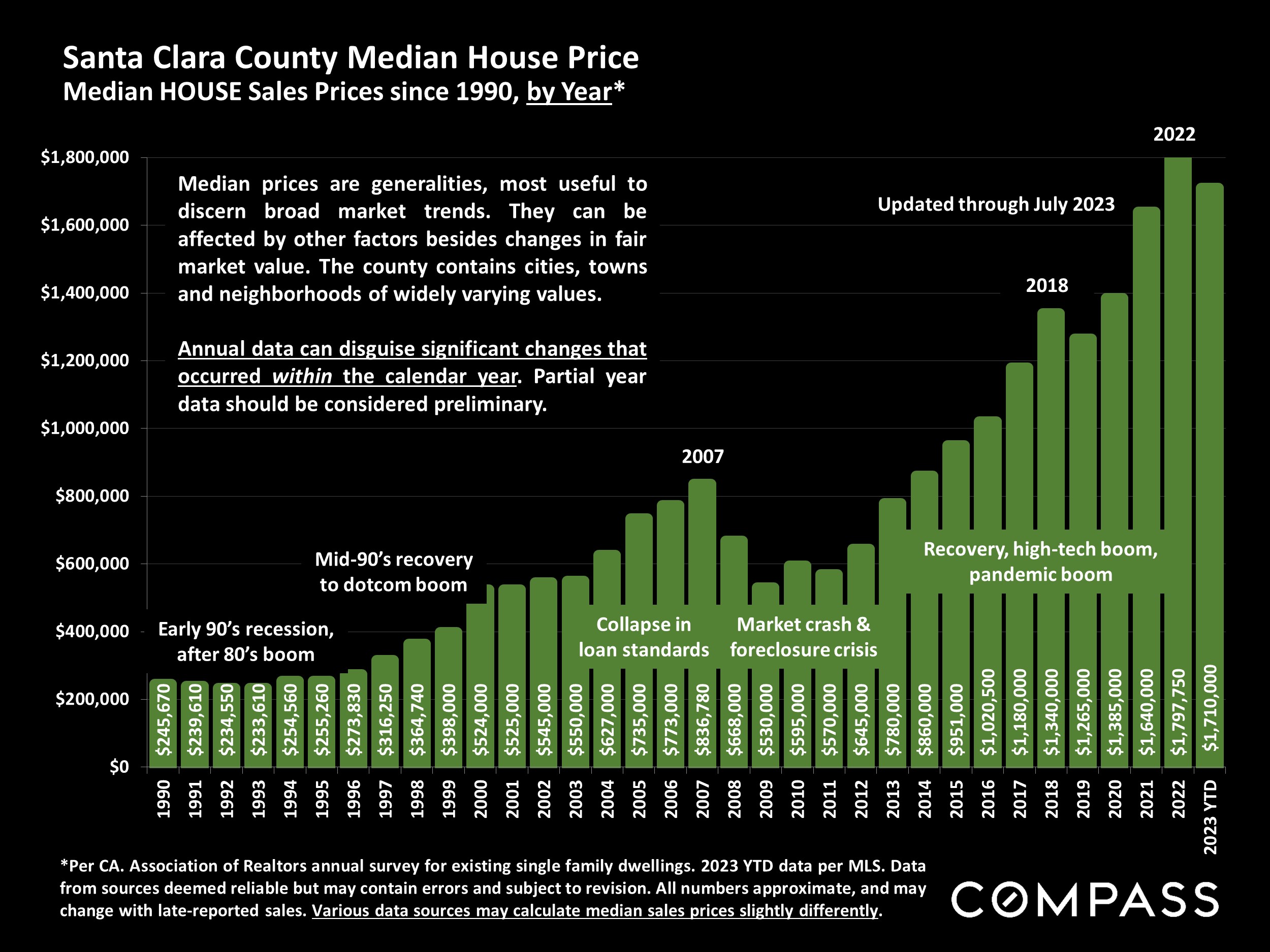
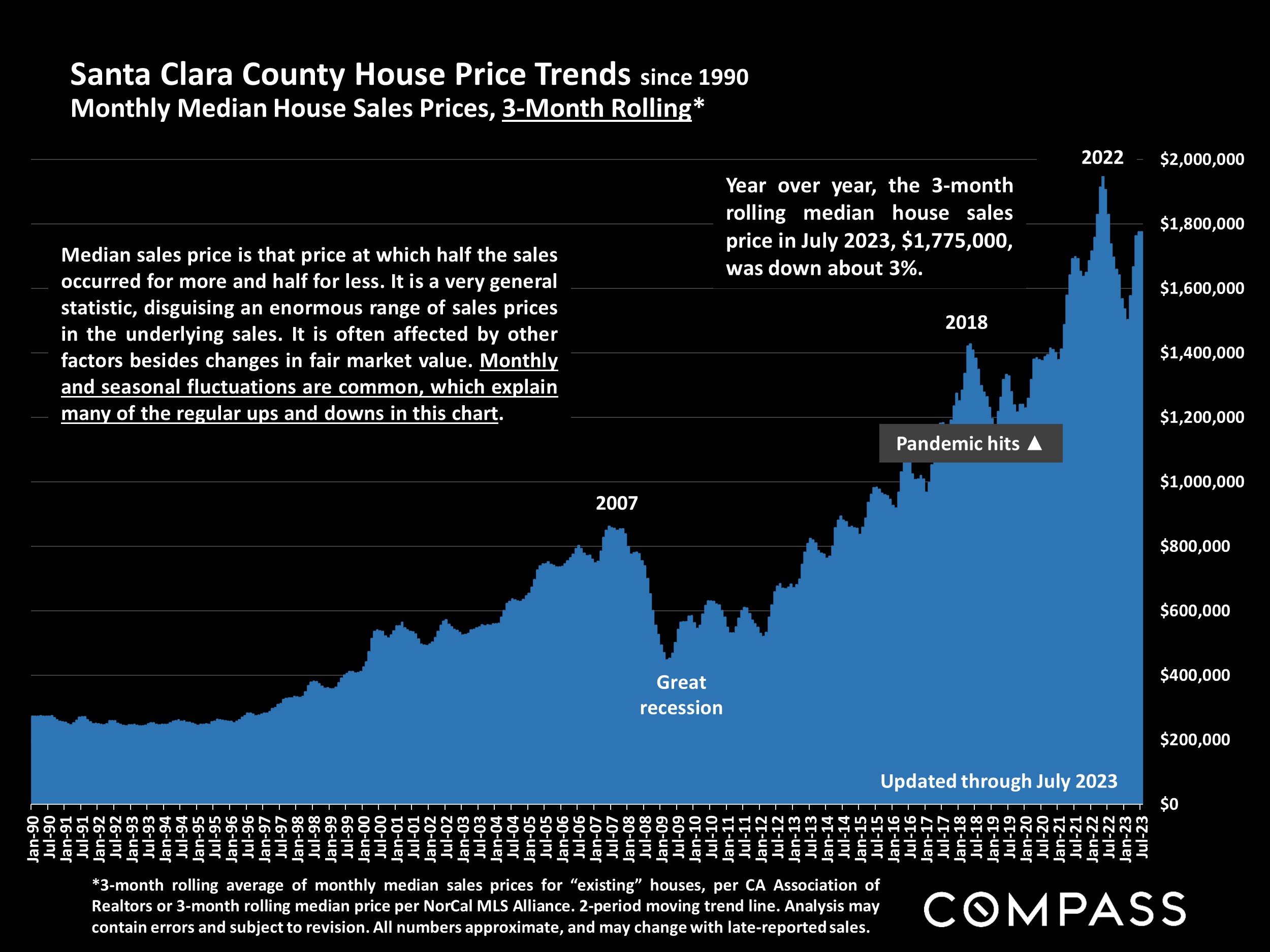
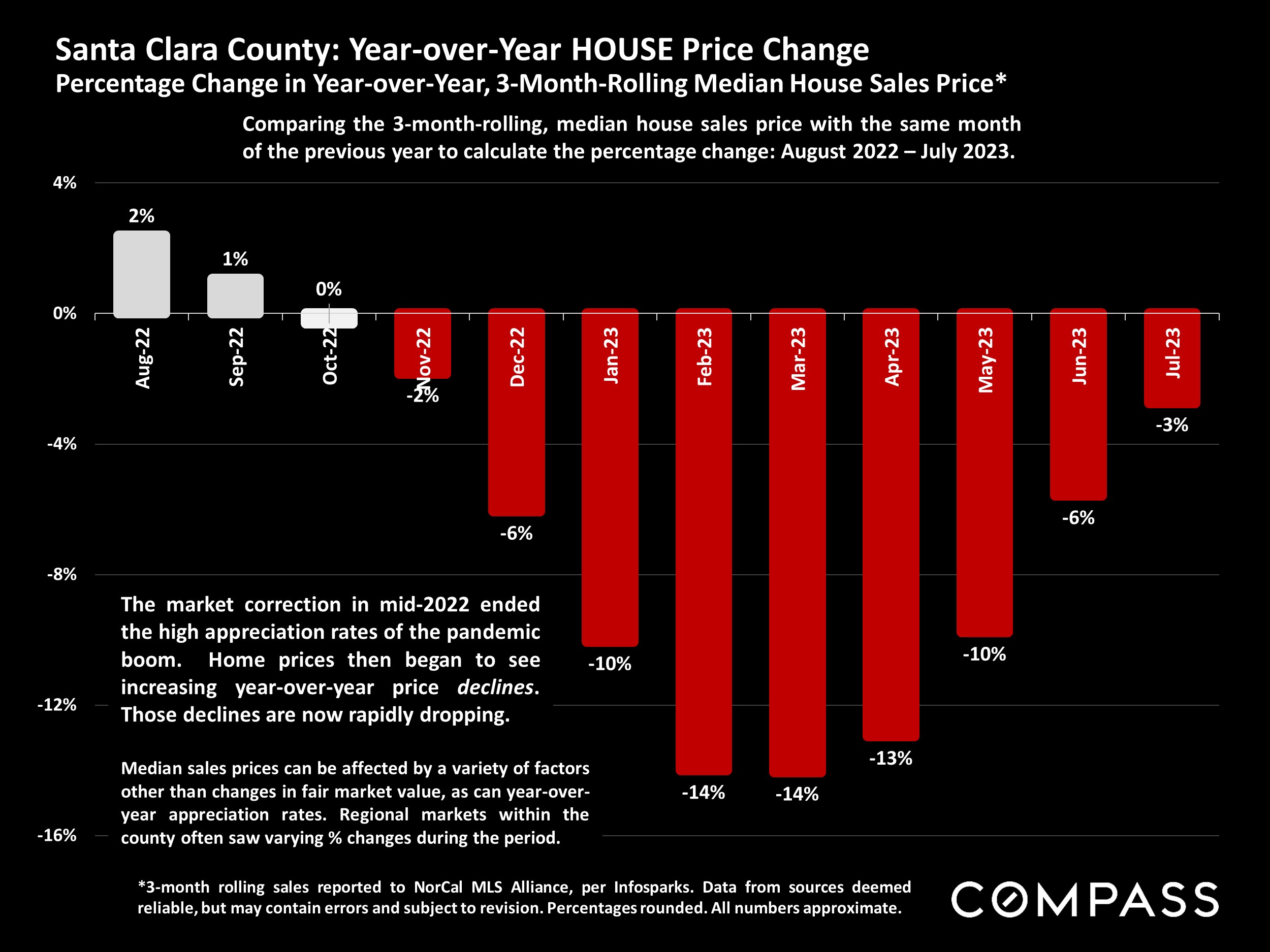
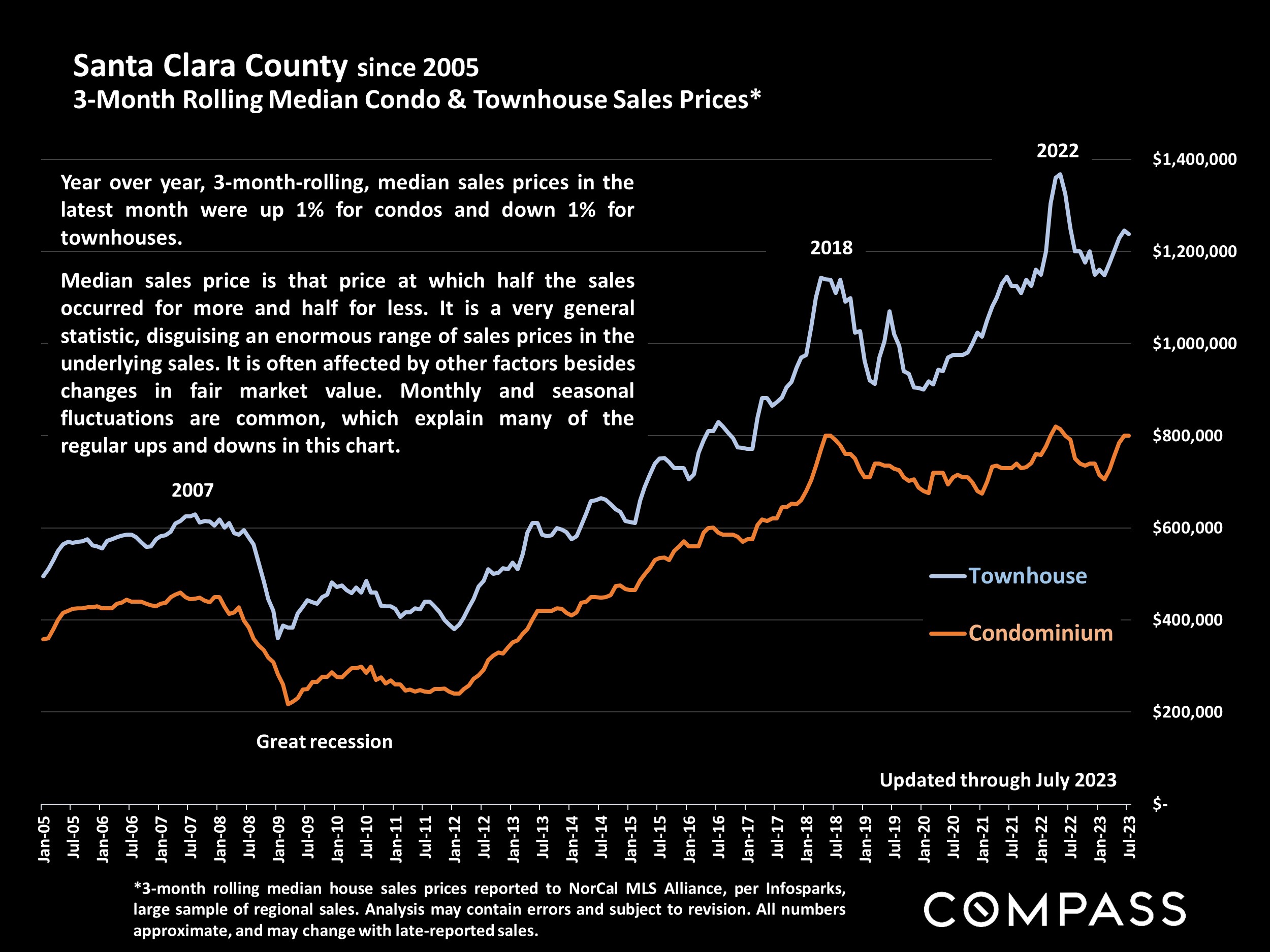
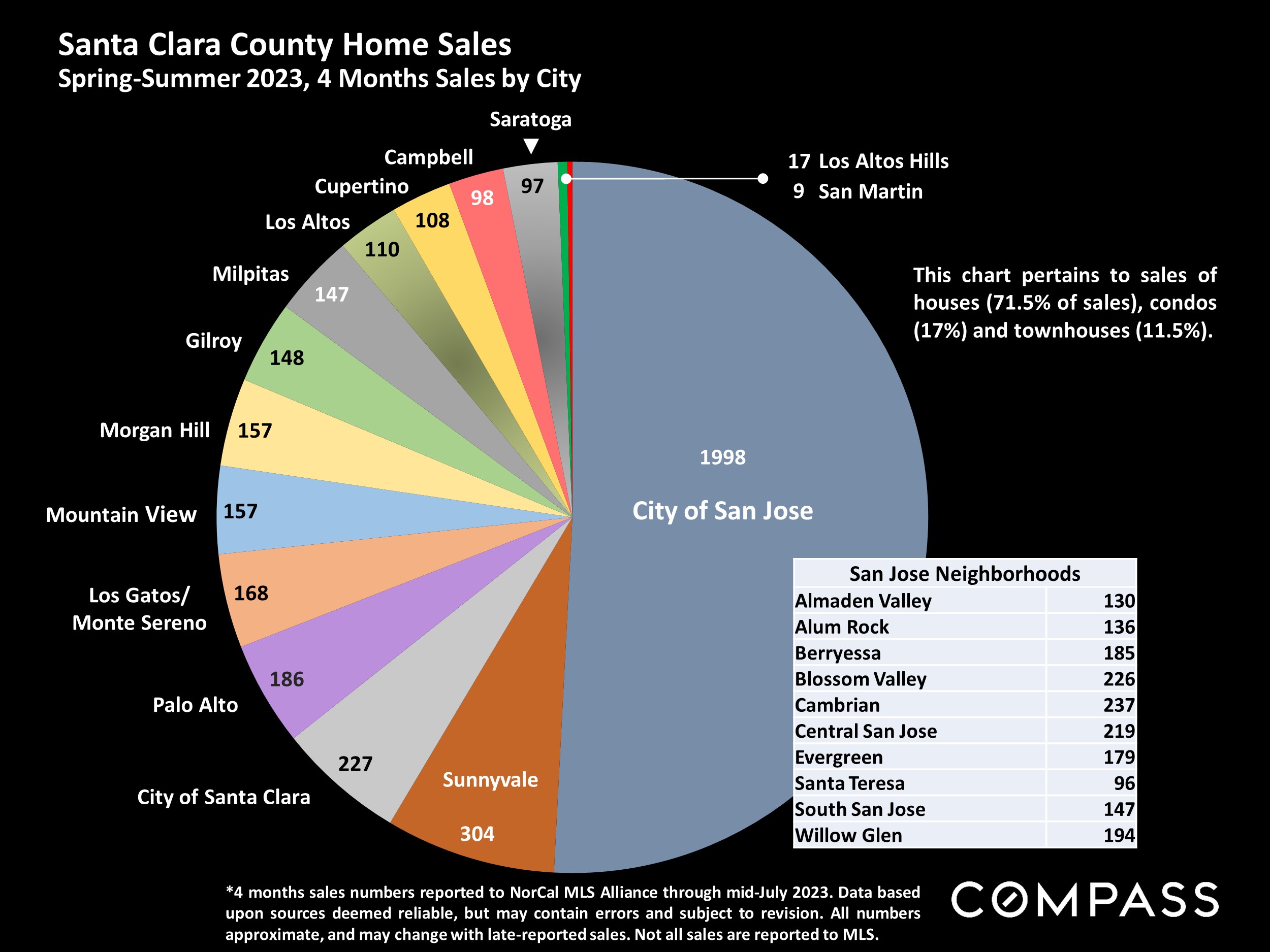
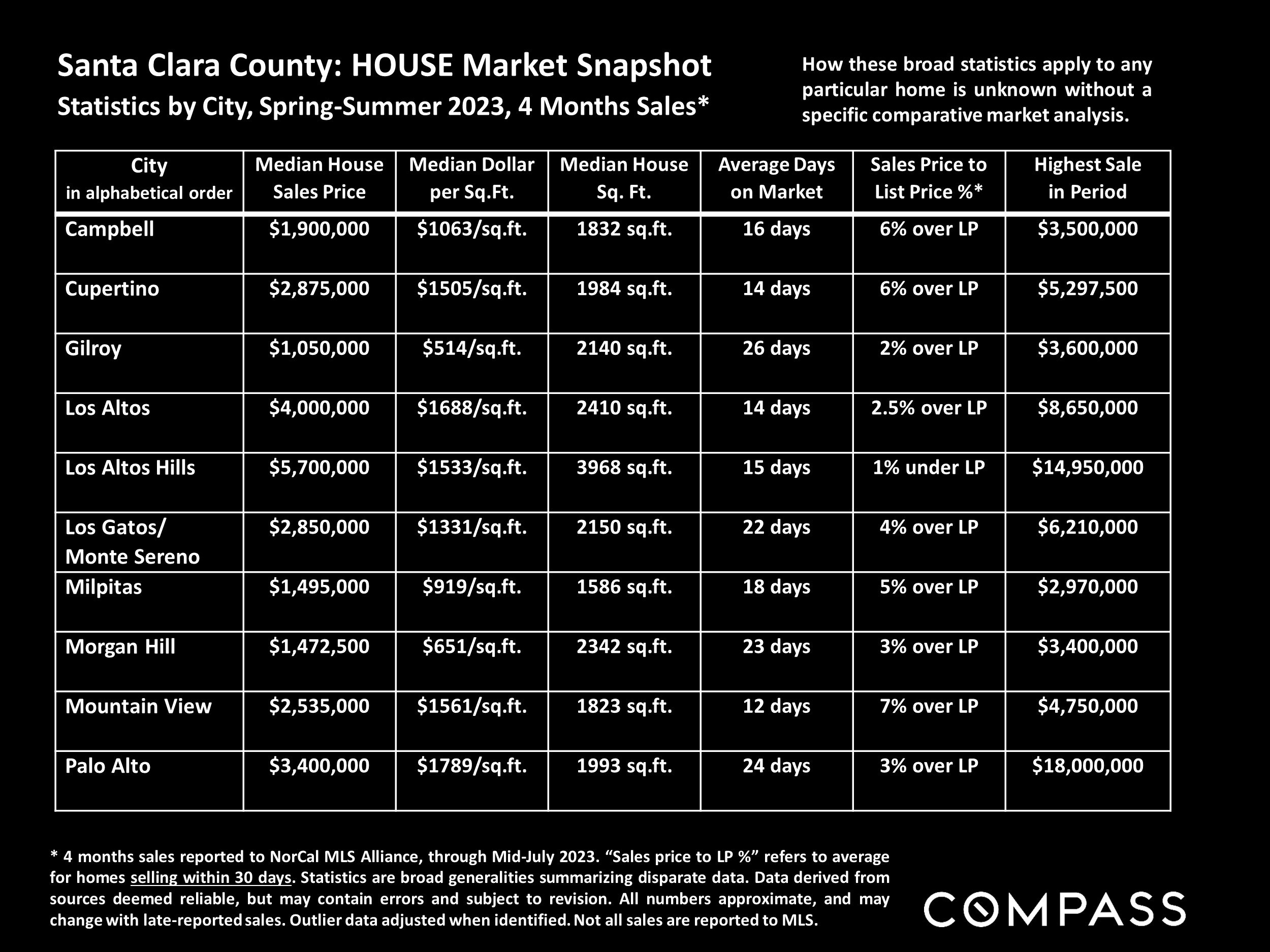
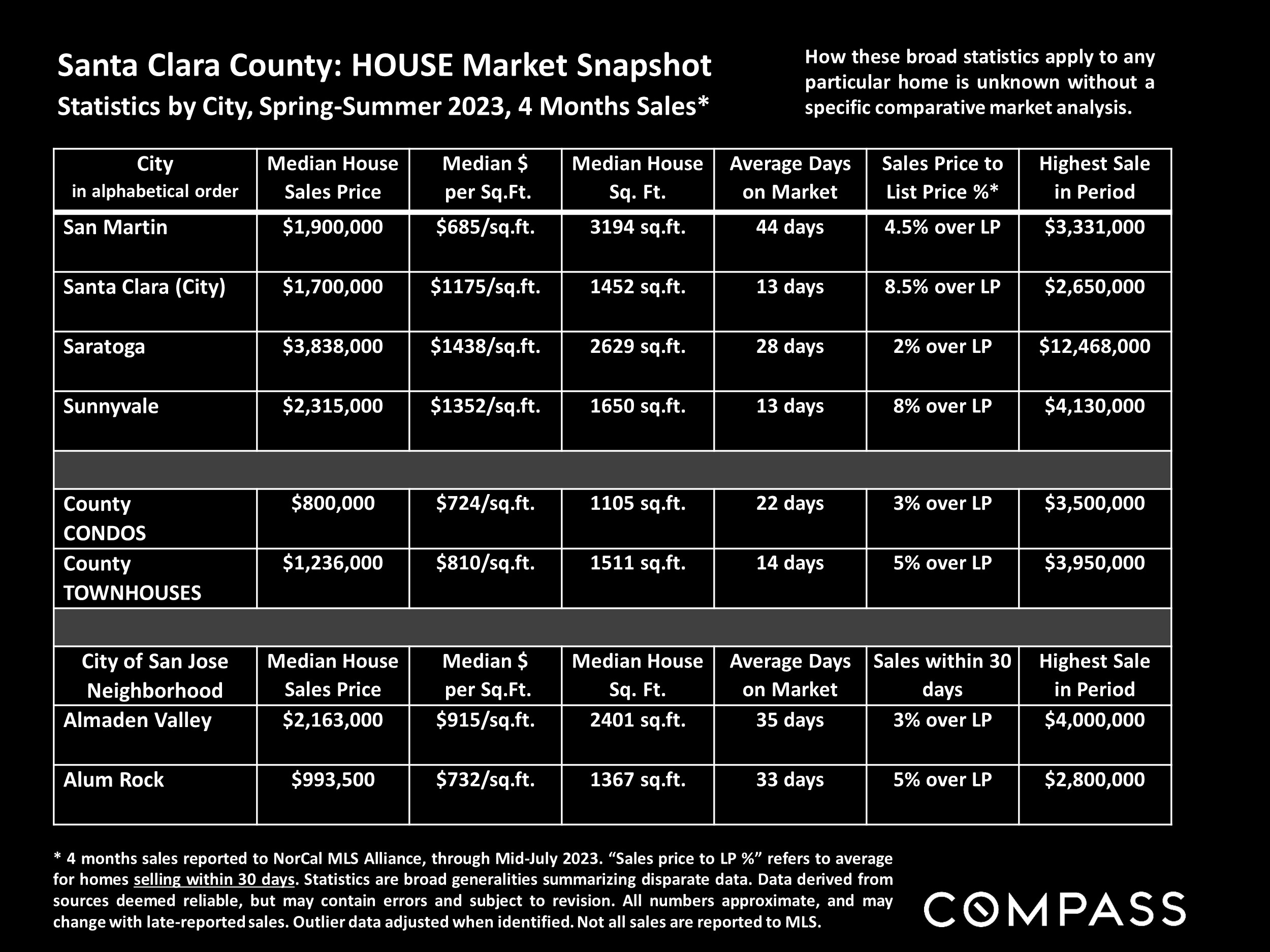
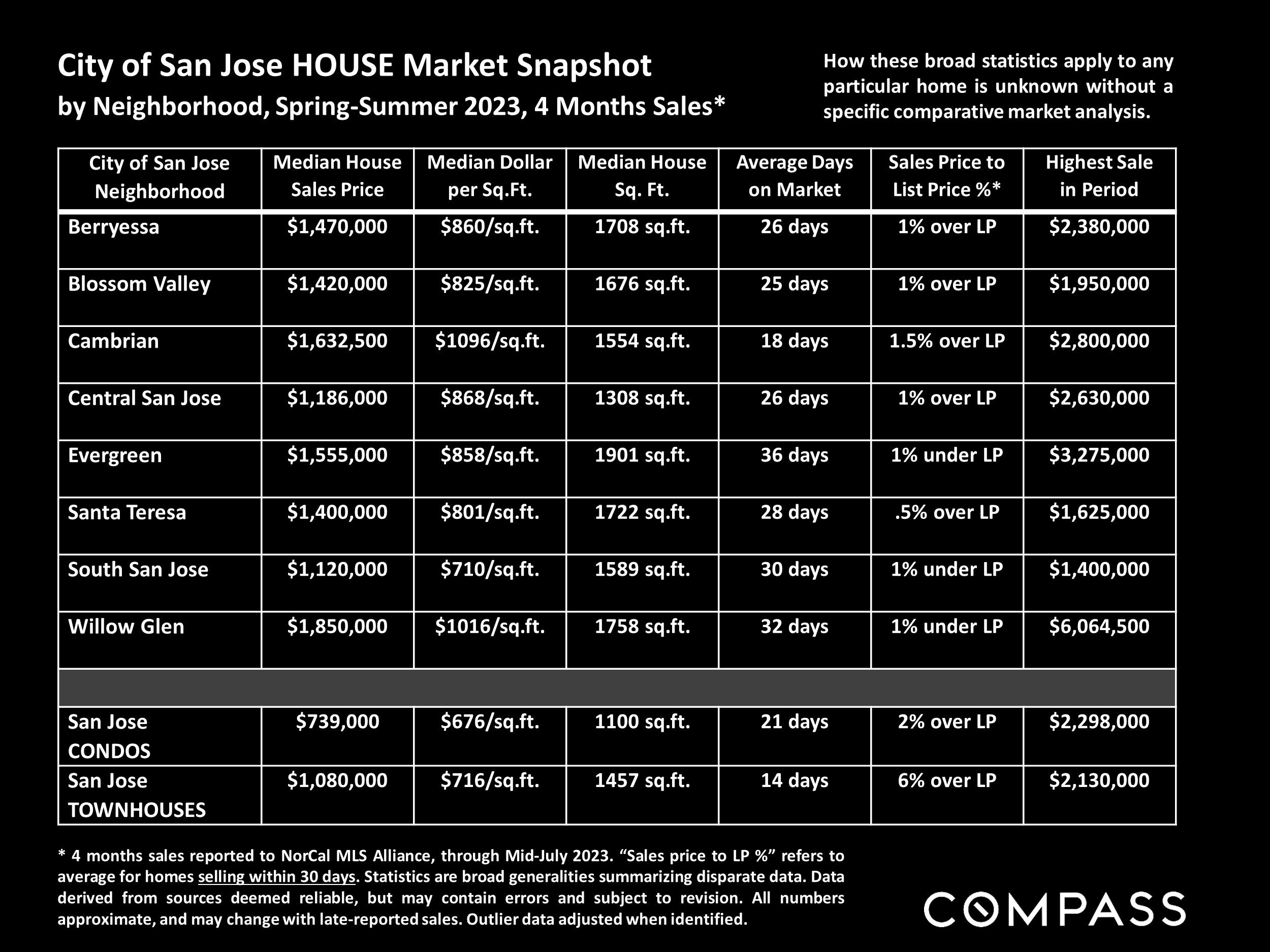

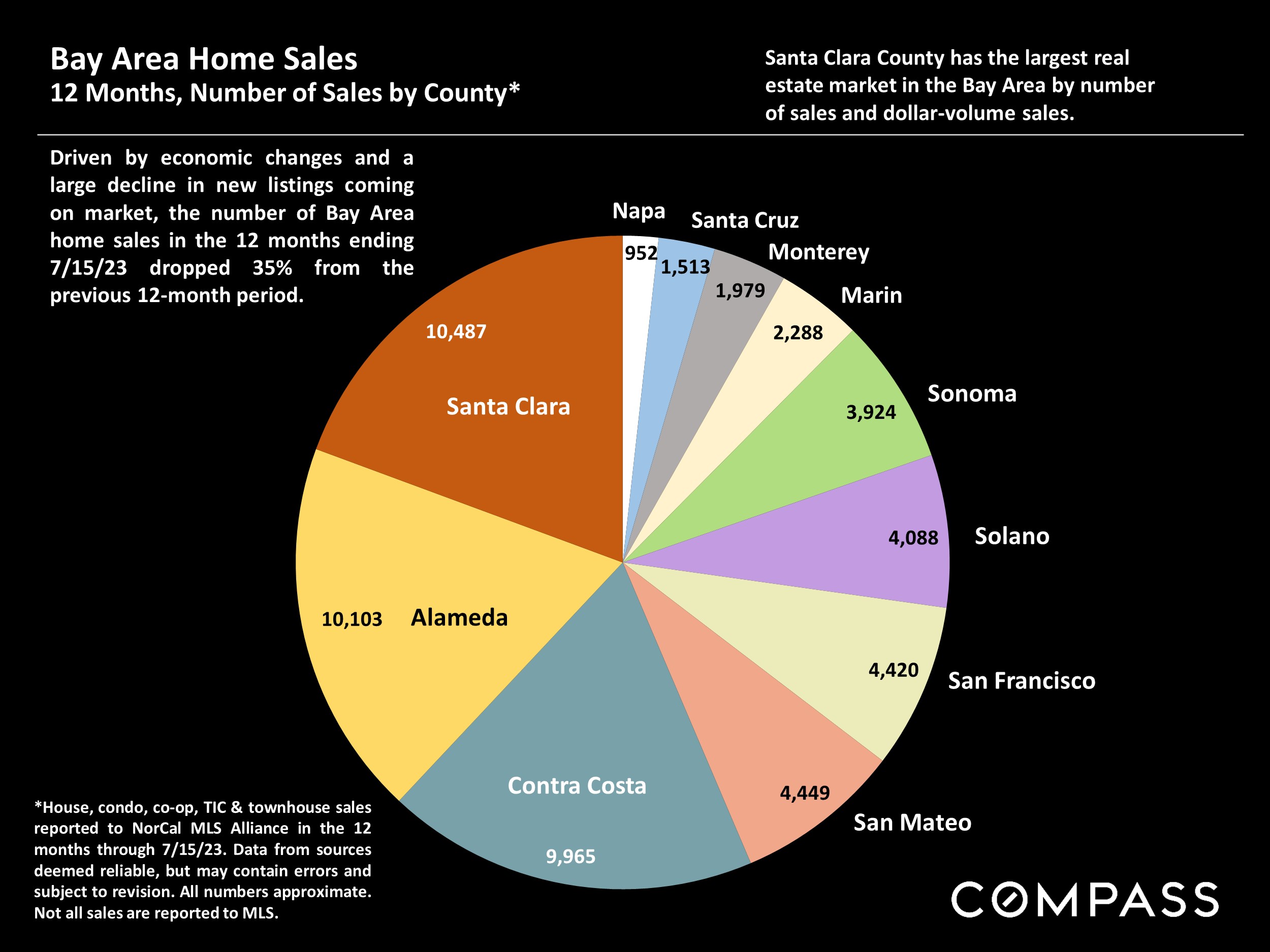
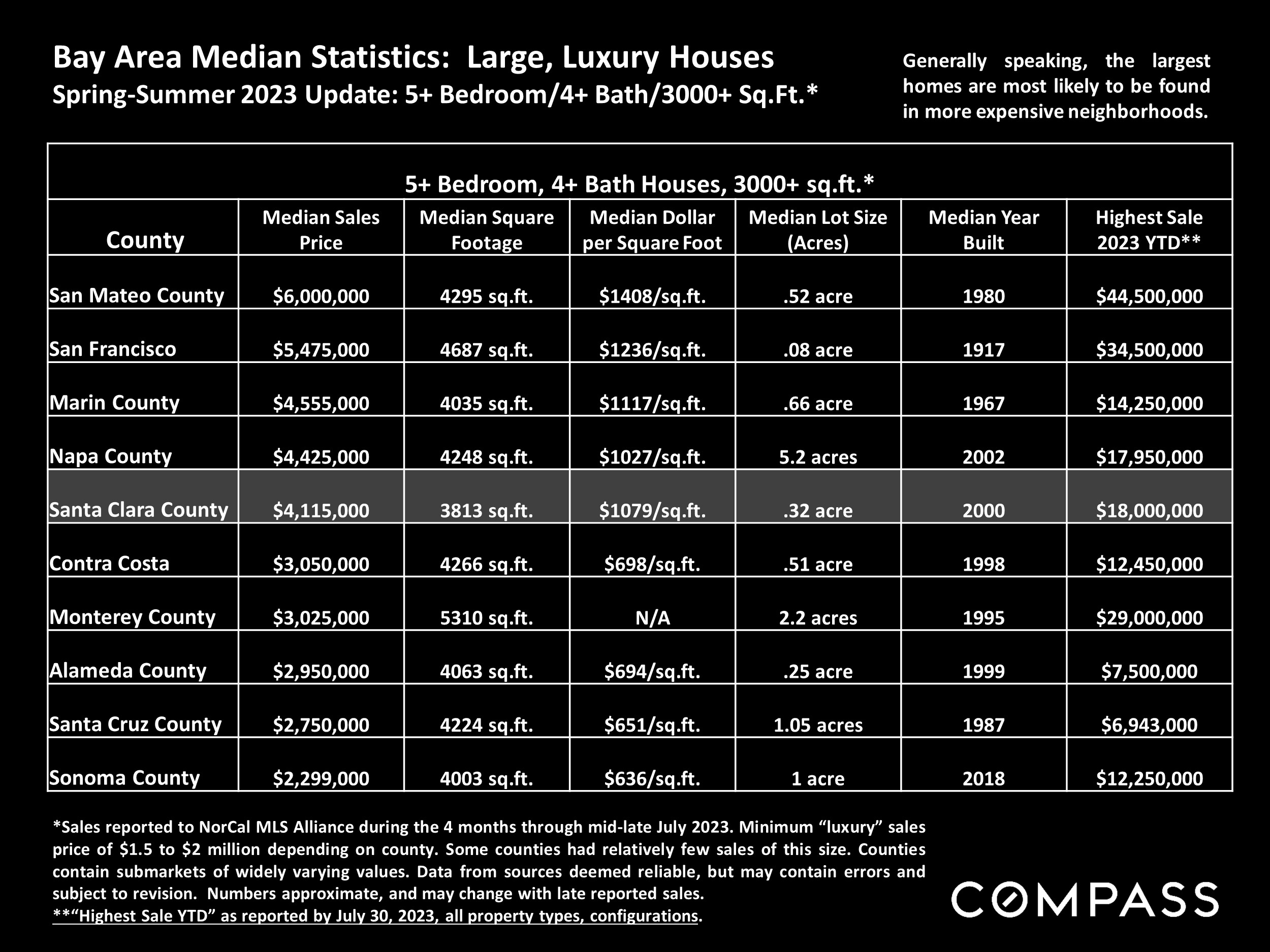
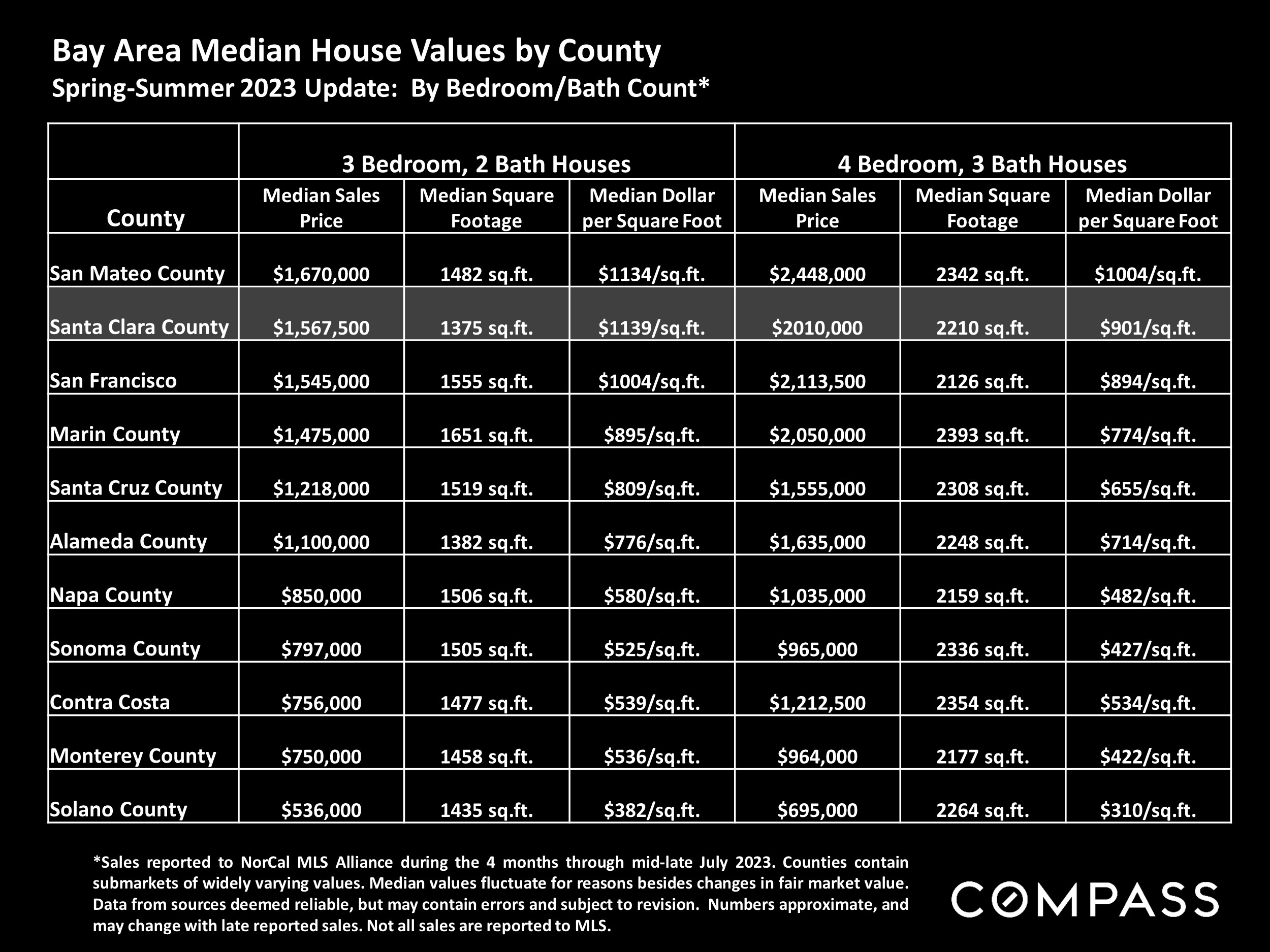
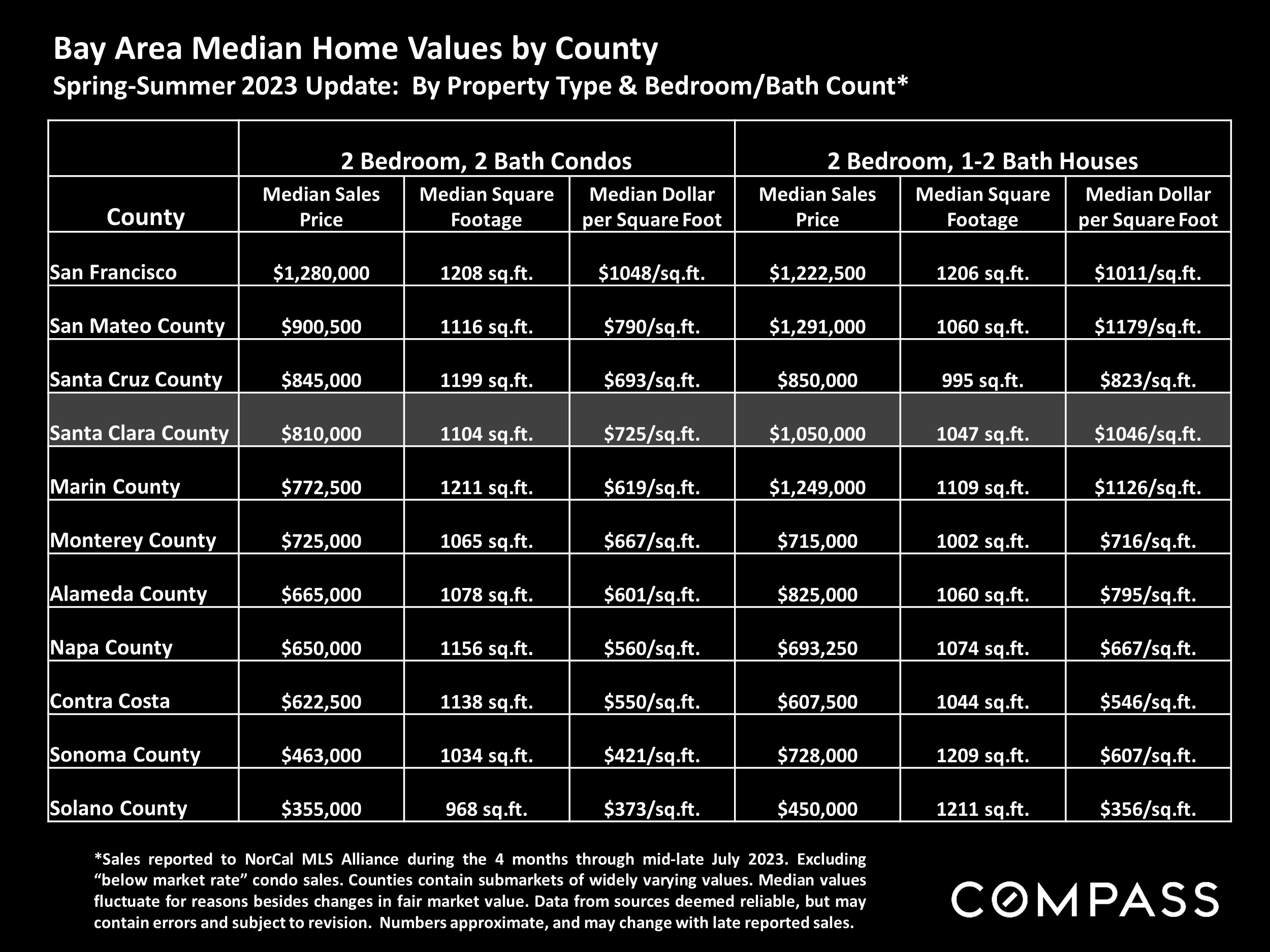
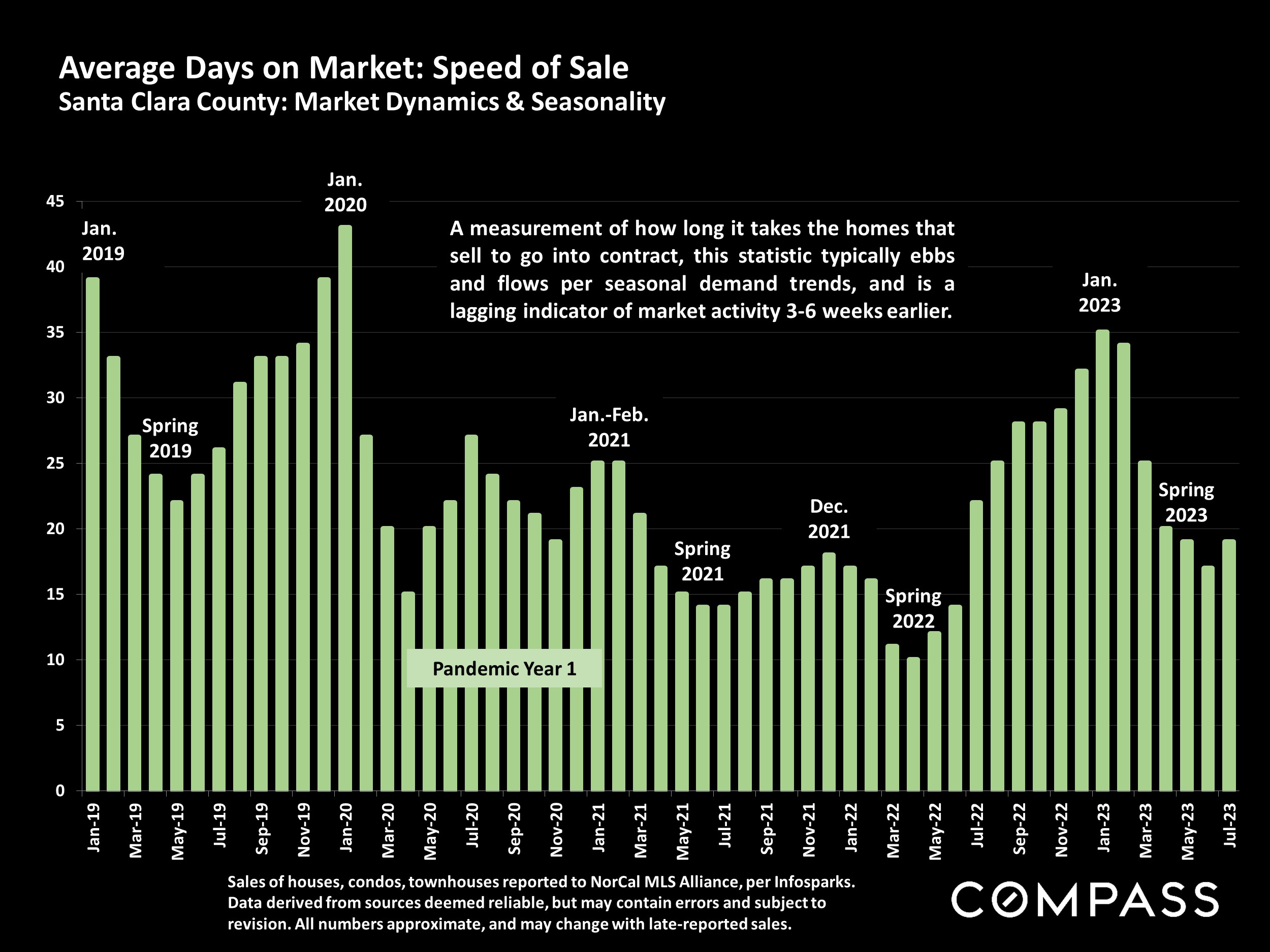
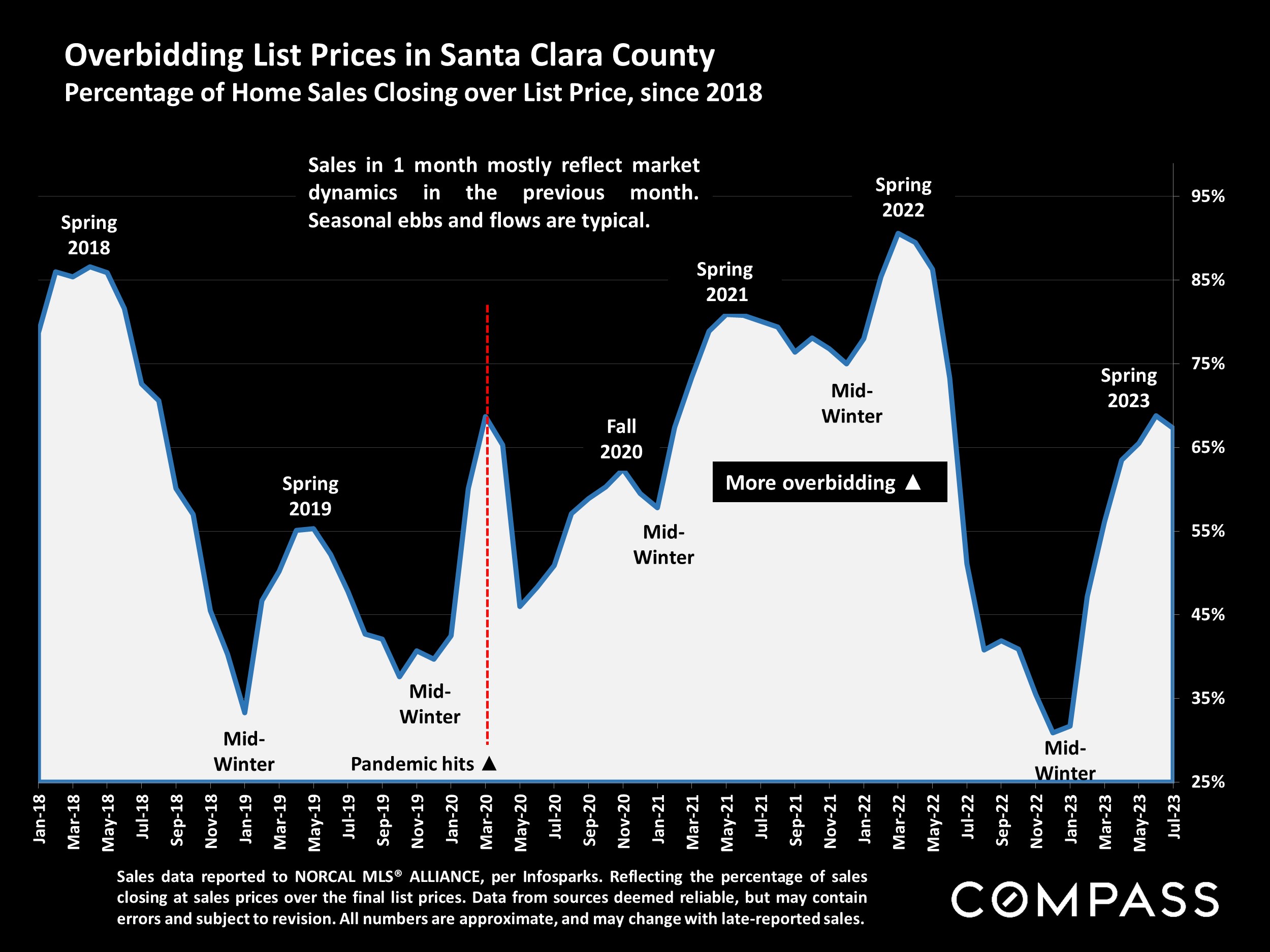
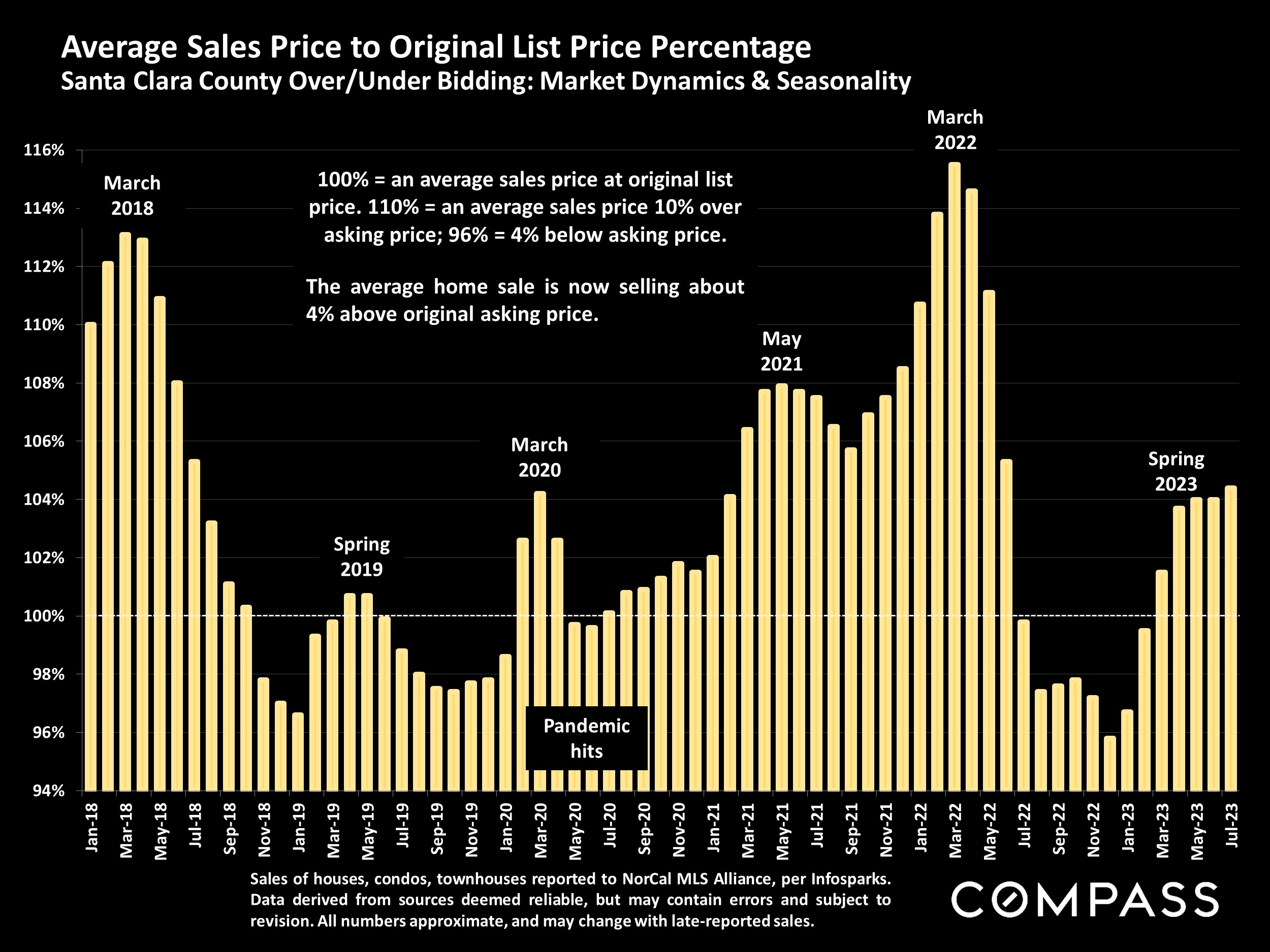
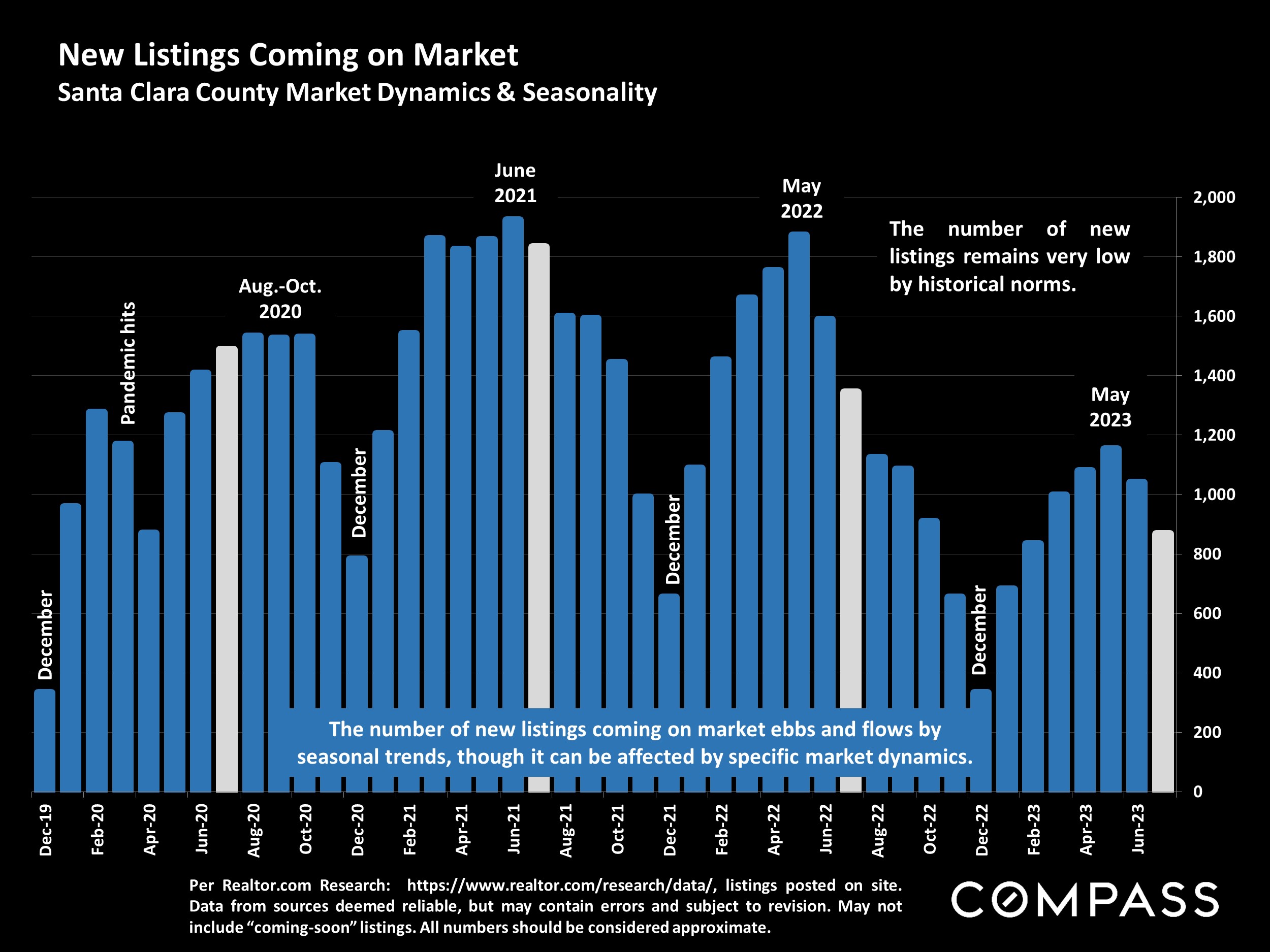
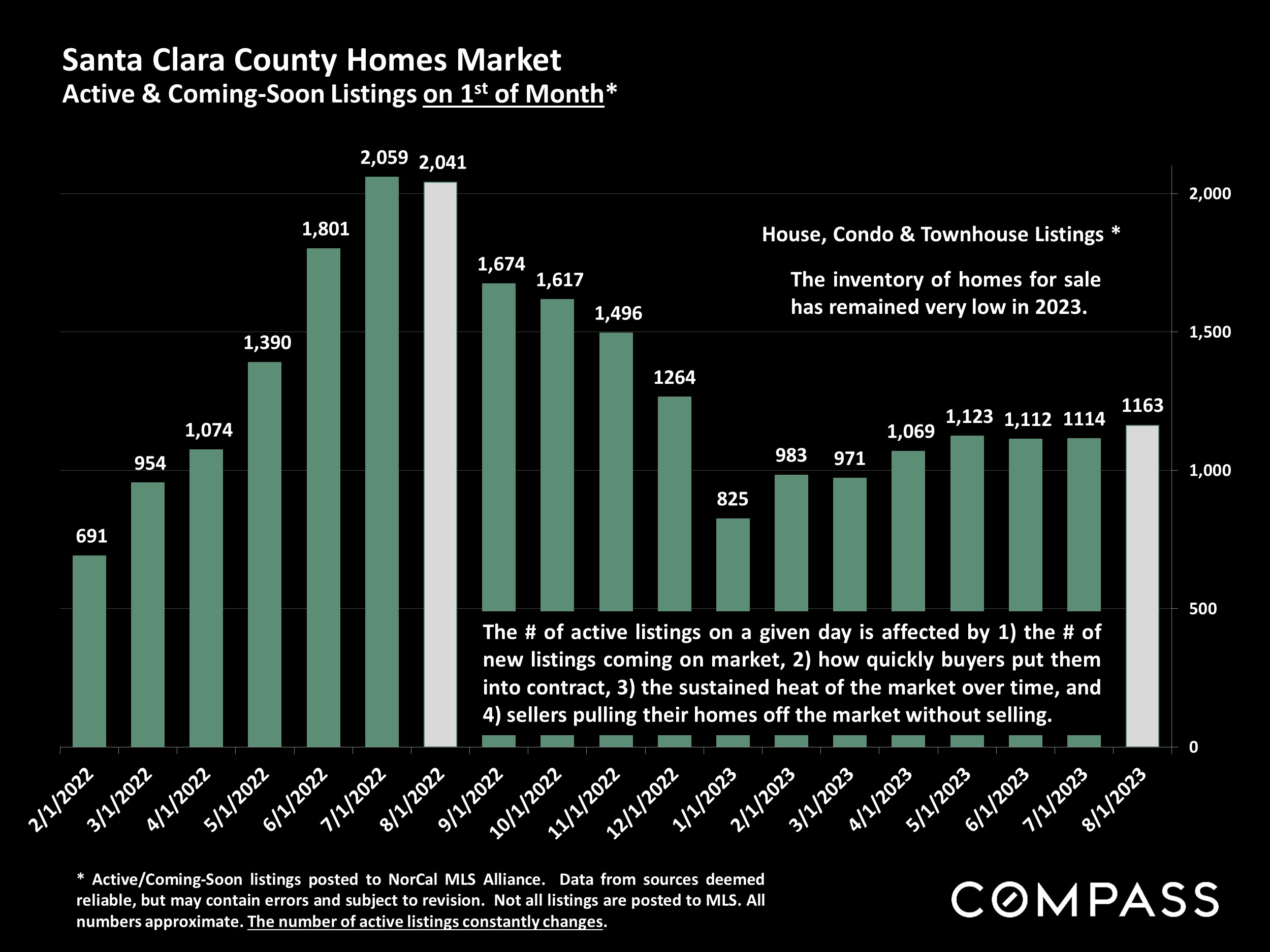
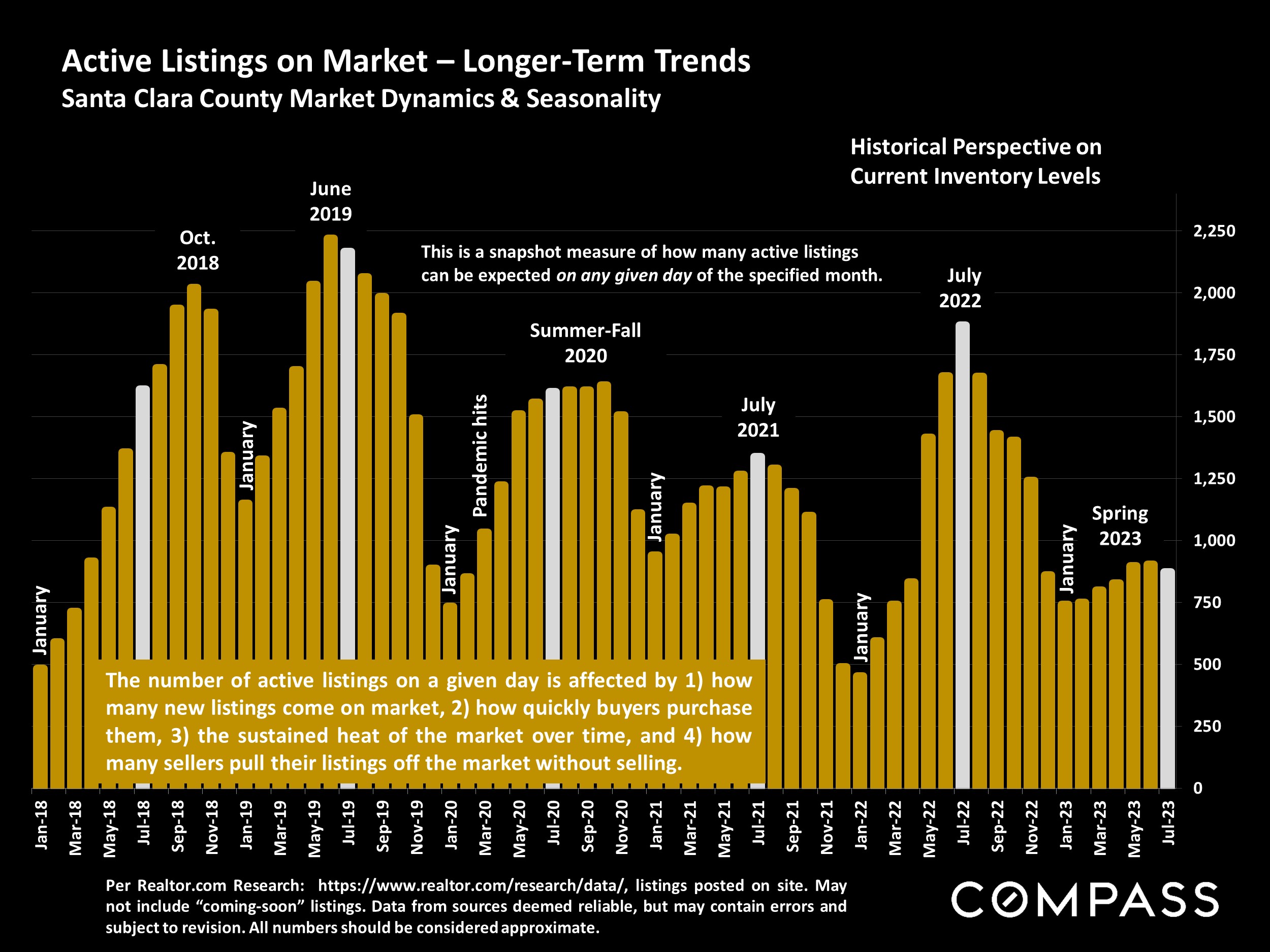
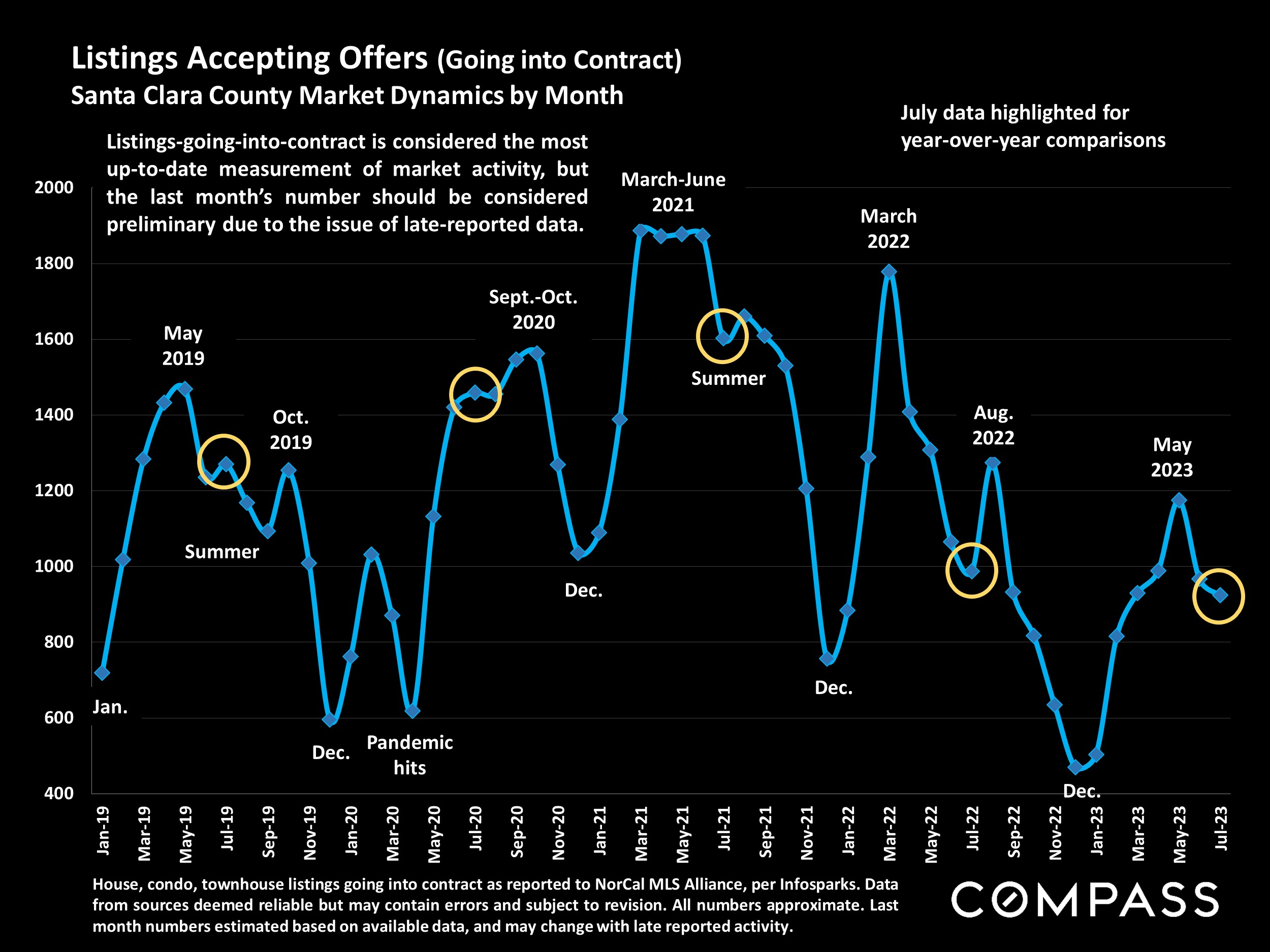
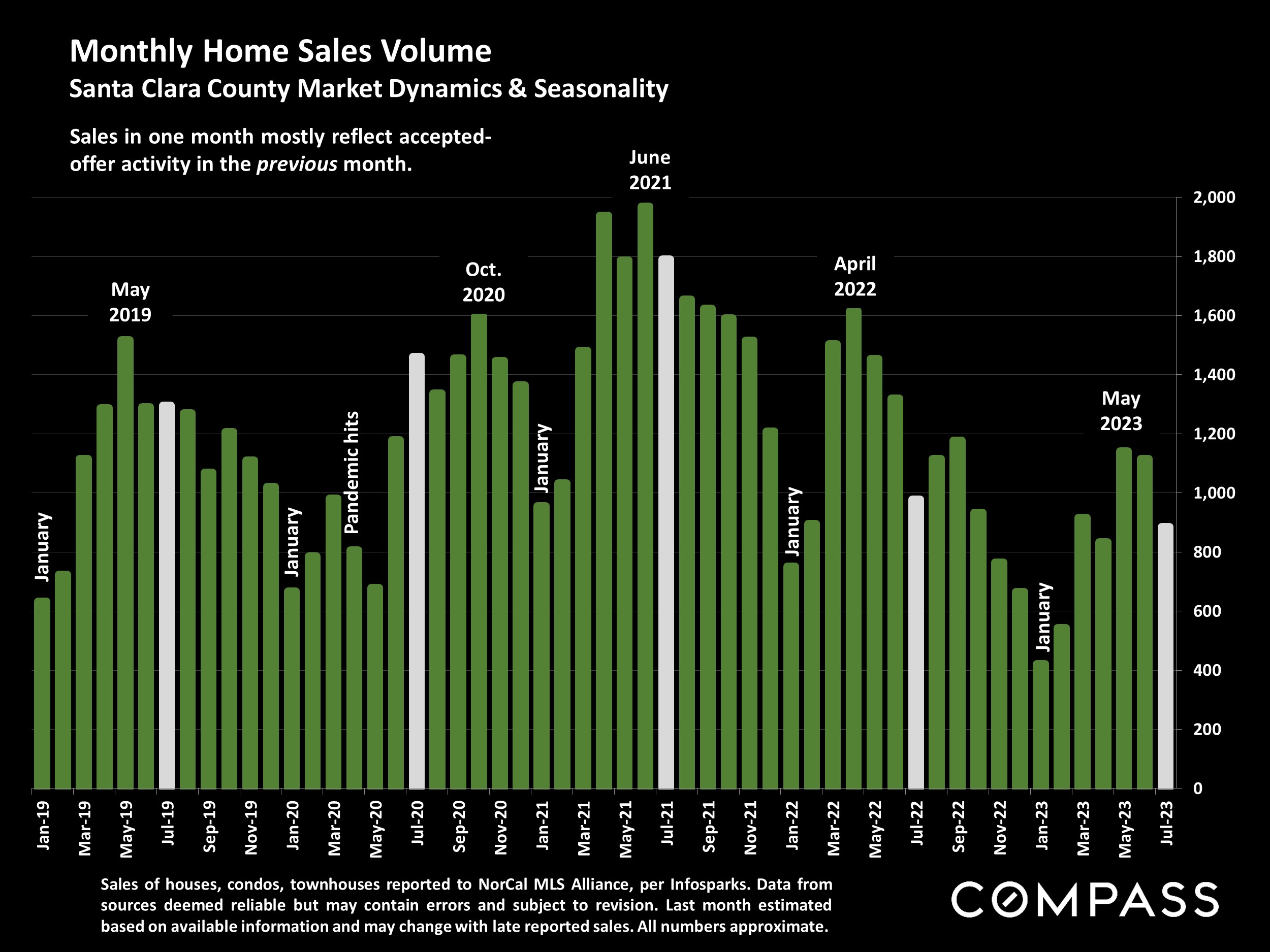
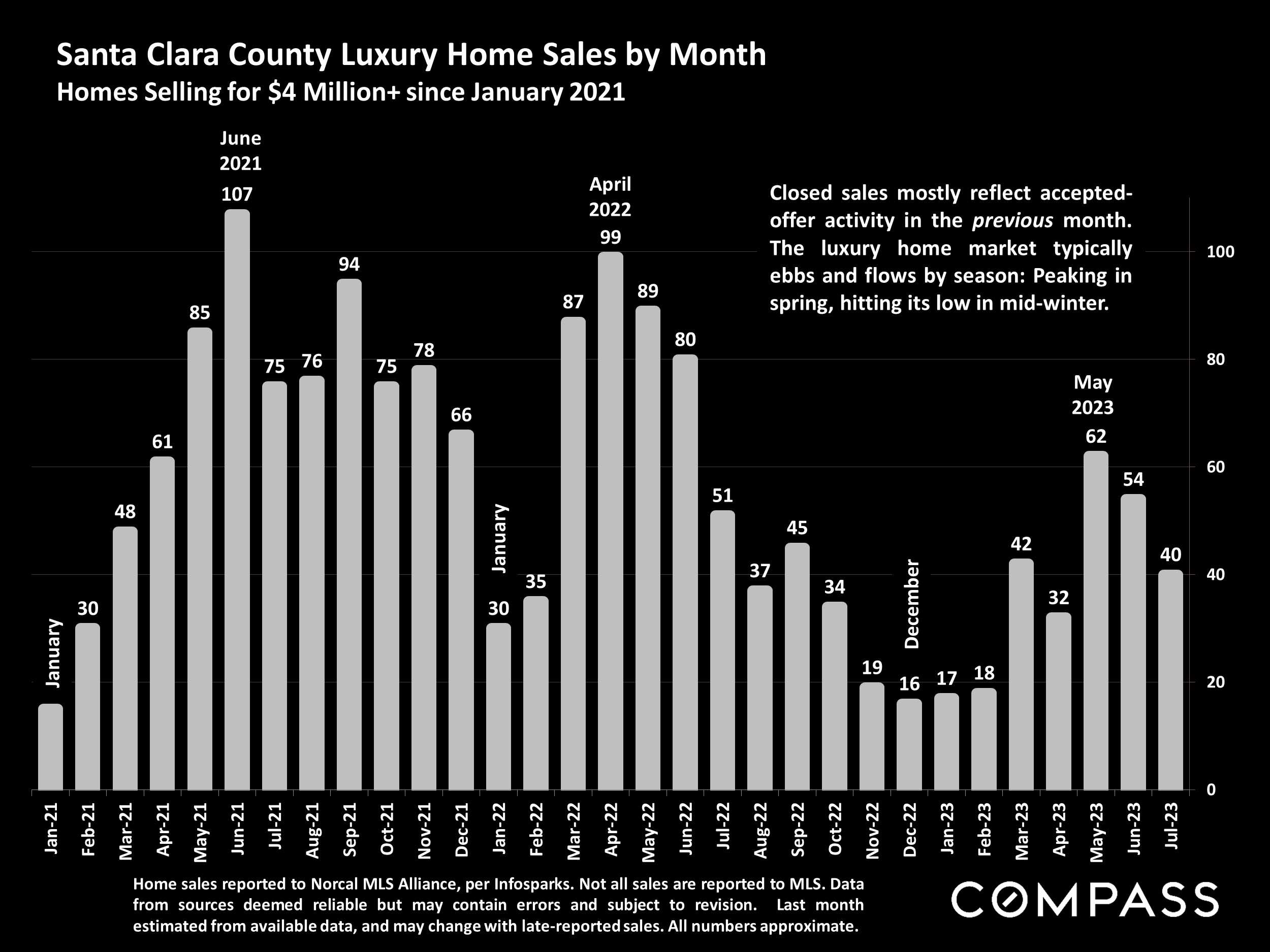

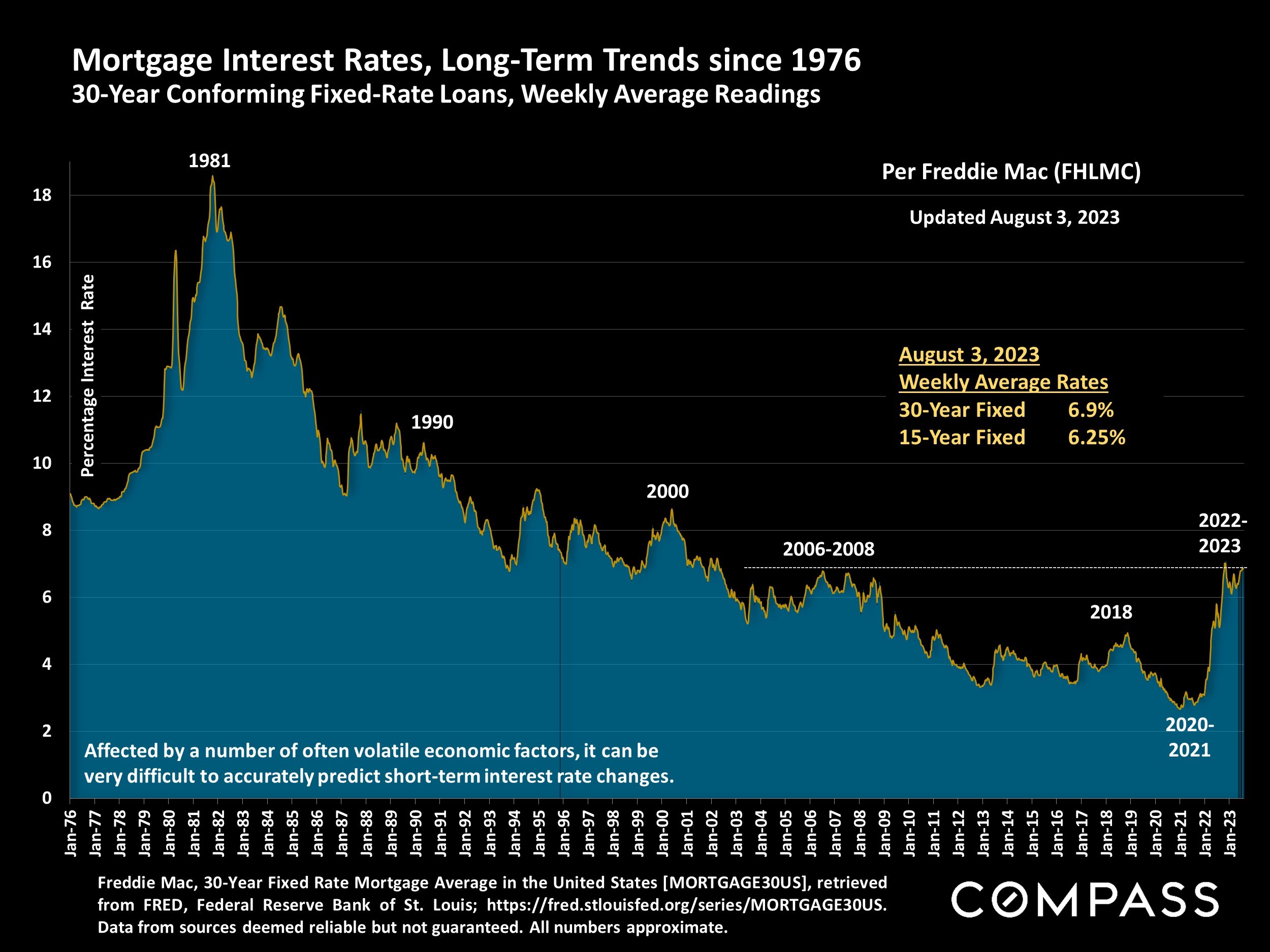
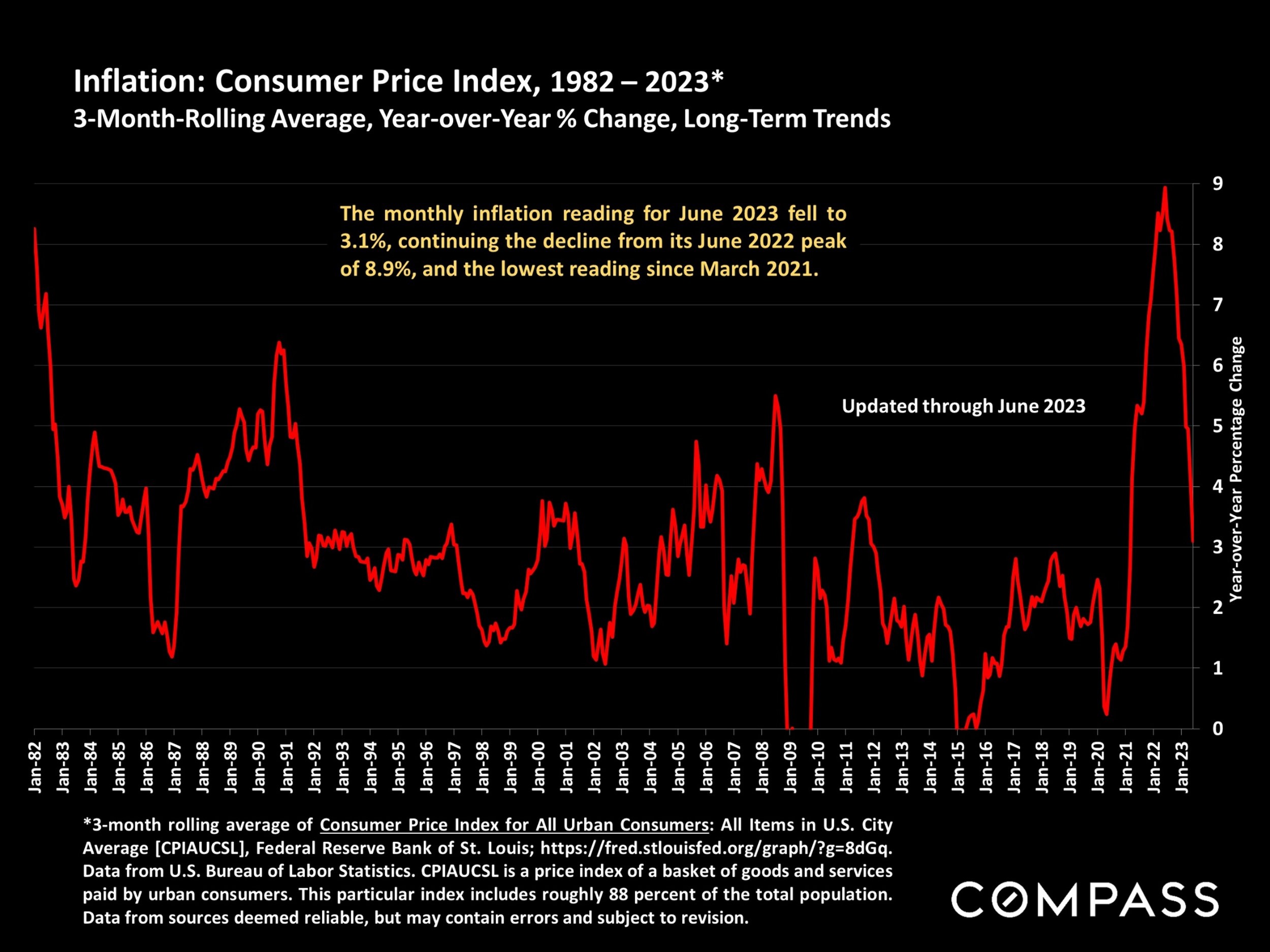

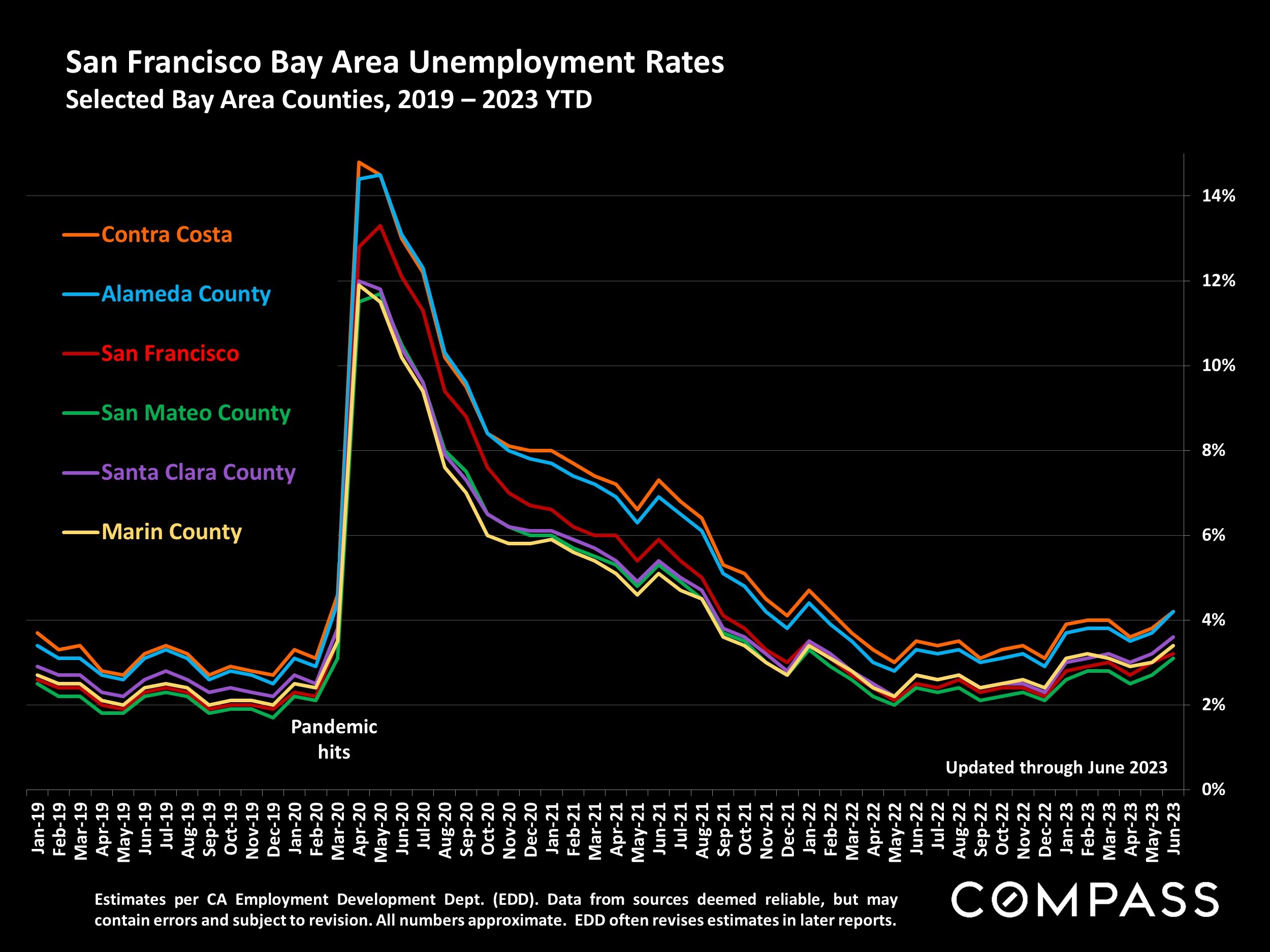
Statistics are generalities, essentially summaries of widely disparate data generated by dozens, hundreds or thousands of unique, individual sales occurring within different time periods. They are best seen not as precise measurements, but as broad, comparative indicators, with reasonable margins of error. Anomalous fluctuations in statistics are not uncommon, especially in smaller, expensive market segments. Last period data should be considered estimates that may change with late-reported data. Different analytics programs sometimes define statistics – such as “active listings,” “days on market,” and “months supply of inventory” – differently: what is most meaningful are not specific calculations but the trends they illustrate. Most listing and sales data derives from the local or regional multi-listing service (MLS) of the area specified in the analysis, but not all listings or sales are reported to MLS and these won’t be reflected in the data. “Homes” signifies real-property, single-household housing units: houses, condos, co-ops, townhouses, duets and TICs (but not mobile homes), as applicable to each market. City/town names refer specifically to the named cities and towns, unless otherwise delineated. Multi-county metro areas will be specified as such. Data from sources deemed reliable, but may contain errors and subject to revision. All numbers to be considered approximate.
Many aspects of value cannot be adequately reflected in median and average statistics: curb appeal, age, condition, amenities, views, lot size, quality of outdoor space, “bonus” rooms, additional parking, quality of location within the neighborhood, and so on. How any of these statistics apply to any particular home is unknown without a specific comparative market analysis. Median Sales Price is that price at which half the properties sold for more and half for less. It may be affected by seasonality, “unusual” events, or changes in inventory and buying trends, as well as by changes in fair market value. The median sales price for an area will often conceal an enormous variety of sales prices in the underlying individual sales.
Dollar per Square Foot is based upon the home’s interior living space and does not include garages, unfinished attics and basements, rooms built without permit, patios, decks or yards (though all those can add value to a home). These figures are usually derived from appraisals or tax records, but are sometimes unreliable (especially for older homes) or unreported altogether. The calculation can only be made on those home sales that reported square footage.
Compass is a real estate broker licensed by the State of California, DRE 01527235. Equal Housing Opportunity. This report has been prepared solely for information purposes. The information herein is based on or derived from information generally available to the public and/or from sources believed to be reliable. No representation or warranty can be given with respect to the accuracy or completeness of the information. Compass disclaims any and all liability relating to this report, including without limitation any express or implied representations or warranties for statements contained in, and omissions from, the report. Nothing contained herein is intended to be or should be read as any regulatory, legal, tax, accounting or other advice and Compass does not provide such advice. All opinions are subject to change without notice. Compass makes no representation regarding the accuracy of any statements regarding any references to the laws, statutes or regulations of any state are those of the author(s). Past performance is no guarantee of future results.






